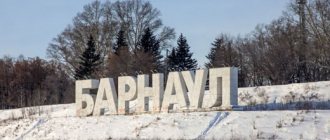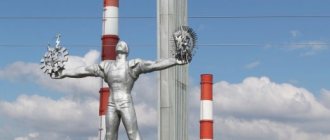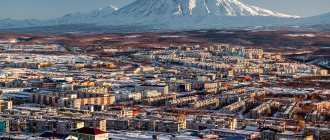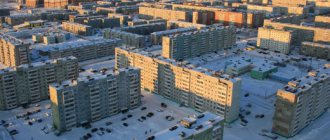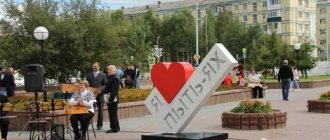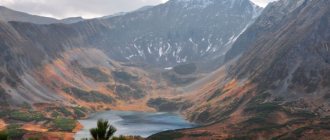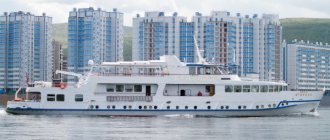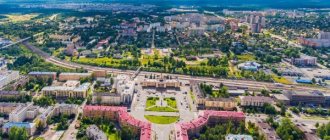Where is Voronezh on the map of Russia
Voronezh on the map of Russia is located in the southern central part between the Central Russian and Oka-Don plains, on both banks of the river of the same name, which flows into the Don. The distance from Moscow is about 500 km.
Nearest major settlements:
- Rostov-on-Don;
- Kursk;
- Lipetsk;
- Eagle;
- Tambov;
- Volgograd;
- Tula.
It forms the largest agglomeration in the central federal district of Russia, after Moscow.
Voronezh bus stations
The Voronezh central bus station is located at Moskovsky Prospekt, 17, opposite the Saturn shopping complex. Also next to the main building of the bus station is Rosselkhozbank. The bus station's opening hours are from 5:30 to 22:00, without days off or technical breaks.
Popular routes of regular buses: Saratov, Lipetsk, Tambov, Tolyatti, Balashov, Uvarovo, Astrakhan, Belgorod, Warsaw, Volzhsky, Volgograd, Derbent, Zaporozhye, Zheleznogorsk, Kaluga, Kursk, Kiev, Makhachkala.
Climate and weather in the city by month. Best time to travel to Voronezh
Voronezh on the map of Russia is located in the central part, which means it is in the temperate continental climate zone.
Winters are mild, but with constant snow cover. Thaws or a sharp drop in temperature to -20 are possible. Frosts are short-lived. The average daily winter temperature is -6 degrees. Ice cover is established on the Voronezh Reservoir from December to March.
Summers are warm, with hot, dry periods possible in July and early August. In some years, summer can be rainy. The duration of the climatic summer is 114 days. Autumn is damp and mild. Snow cover is established by mid-December, rarely in November.
In spring the weather is unstable. The air can warm up to +20 degrees, and then it snows suddenly. On average, frosts end in April. In recent years, there has been a decrease in sharp temperature changes both in winter towards warming and in summer. The number of cloudy days without sun is about 100 days, most of them occur in winter.
The best time for excursions around the city will be the end of spring, the beginning of summer and autumn. At this time, it is most comfortable to walk the streets and see the sights.
Restoration of Voronezh after the war and further development of the city
The restoration of Voronezh began in 1943 immediately after its liberation (January 25, 1943) from the Nazi invaders and was completed by the end of the 50s. The population of the city in 1959 was 448.2 thousand people.
The photo shows the main city avenue of the Revolution in 1950.
By 1950, the restoration of Voronezh was almost complete. Many buildings and architectural monuments of the city were restored. In the 1950s, new enterprises opened in the city: the Voronezh ceramic plant, a tire plant, etc. In Voronezh, at the enterprise of the Chemical Automatics Design Bureau (KBHA), an oxygen-kerosene liquid-propellant rocket engine RD0105 was developed for the third stage of the Luna launch vehicle. With the help of this engine in 1959, for the first time in the world, second escape velocity was achieved. Based on the RD0105 engine, an engine was created for the third stage of the launch vehicle, which launched the Vostok spacecraft into space with the world's first cosmonaut Yu. A. Gagarin on board. It was in Voronezh at the Voronezh Aviation Plant in 1968 that the Tu-144 supersonic passenger aircraft was mass-produced for the first time in the world. In October 1977, the first domestic airbus (wide-body aircraft) Il-86 was built at the plant.
The photo shows the Chernavsky Bridge, a view of the Left Bank of Voronezh. 1970s
In the 60s and 70s, the development of the city continued, accompanied by an expansion of the housing stock and the emergence of new comfortable neighborhoods. In 1972, the Voronezh reservoir was created. At the same time, the remains of the Church of the Excavation of the Dead from the mid-19th century and the building of the Admiralty of Peter I on Petrovsky Island were lost, and the Admiralty Church was flooded. In 1975, during the celebration of the 30th anniversary of the Victory over the Nazi invaders, the city of Voronezh, by Decree of the Presidium of the Supreme Soviet of the USSR, was awarded the Order of the Patriotic War, 1st degree, for courage and heroism during the Great Patriotic War and success in the development of the national economy.
Transport system of Voronezh. How to get to the city
Getting to Voronezh will not be difficult.
Any options are possible here:
- Chertovitskoye International Airport is located 13 km from the central part of the city, where planes fly from all major cities of the country and beyond.
- Railway communication is maintained with a huge number of cities, both in the Central part and in the Urals, and Siberia. There are three train stations in Voronezh. One in the city center, carries the main flow of railway transport routes, from it you can get to any area of the city. Electric trains also operate in many directions.
- There is a bus service to the nearest settlements. There are regular bus services from Moldova, Ukraine, Belarus, Armenia and even Kazakhstan from the city bus station and 2 bus stations.
- Private minibuses operate regularly from nearby cities.
- You can get there by private car.
Voronezh Airport
There is an international airport in Voronezh. The opening date of the airfield is February 9, 1993. Opening hours: 24 hours a day. The airport is located on the territory of the Ramonsky district in the Voronezh region and has the official status of an object of federal significance. In 2008, the airport was completely reconstructed.
The aircraft operate charter and regular flights to the following destinations: Tbilisi, Istanbul, Moscow, Antalya, St. Petersburg, Sochi, Norilsk, Kaliningrad. The average passenger traffic for one year is approximately 770 thousand people.
Airport services include the ability to transport cargo. Cargo delivery is carried out within 24 hours to more than 130 destinations around the world. Excursions to the territory of the airfield are available for city guests.
The only airfield that exists within the city itself is the Baltimore military airport, formerly known as Voronezh-B.
Geographical features of the city
Voronezh on the map of Russia is located in the center of the European part, at the junction of the Oxo-Don Plain with the Central Russian and Kalach Uplands. This area is dominated by contrasting topography and forest-steppe nature. The Don River and the Voronezh Reservoir, the largest in the central Black Earth Region, have their influence.
The city's location along the banks of the Voronezh River leads to hilly terrain and changes in terrain, which is reflected in the names of city streets:
- Metalhead Mountain;
- Red Mountain;
- Bazarnaya;
- Kubanskaya;
- Craft;
- Sandy;
- Meat Mountain.
Rear
At that difficult time, the rear lived the same life as the front. Voronezh factories produced Katyusha rocket launchers, IL-2 attack aircraft, aircraft engines, and equipment for Red Army soldiers.
Voronezh was one of three Soviet cities where a parade was held on November 7, 1941 to boost the morale of the army and civilians. According to the newspaper Izvestia on November 8, 1941, more than 100 thousand people took part in the procession.
Parade in November 1941
Photo - courtesy of the press service of the Voronezh City Hall
Immediately after the parade, Voronezh officers and soldiers went to the front. Many went to Moscow, where fierce fighting took place in those days.
Borders of Voronezh, relationship with other cities
Voronezh is the main city of the administrative districts and 3 urban districts, along with Borisoglebsky and Novoronezh, which is clearly visible on the map of the region. There is also a division into municipal districts, urban and rural settlements, as is customary in Russia. There are 32 large settlements in the region, including Bobrov, Buturlinovka, Kalach, Liski, Semiluki, Ertil.
The main neighbors are the following areas:
- Rostovskaya;
- Belgorodskaya;
- Kursk;
- Lipetskaya;
- Tambovskaya;
- Volgogradskaya;
- Saratovskaya.
The region also has a common border with Ukraine. Since the Soviet period, the friendship of Voronezh with the twin cities of Borno and Gorzow Wielkopolski has been going on, industrial delegations are being exchanged, and relations in the cultural and educational spheres are also continuing. Attempts are being made to agree on the development of business contacts and holding joint exhibitions and fairs.
Periodic exchanges of delegations from Voronezh with the German Land District of Wesermarsch continue, but there is no economic cooperation between the cities. Cultural exchange takes place with the Spanish Leon and the Bulgarian Sliven.
Agreements were concluded with Gomel and Lugansk. Relations with the Chinese city of Chongqing are being actively improved, but so far to no avail.
History of Voronezh
It starts from the 12th century. There were settlements on the territory of the settlement. 1586 is considered the date of its foundation. It was preceded by the construction of a fortress under the leadership of military leader Semyon Fedorovich Saburov.
The beginning of the existence of the settlement was the construction of a fortress for defense purposes. After Ostrogozh Cherkassy received the right to duty-free trade, it began to acquire the features of a city. The origin of the name is associated with the raven bird. According to another version - from an outdated version of the word “black”. There are hypotheses about the connection of the naming with the Persian “varu” (wide).
During the time of Peter I, Voronezh became a place for the construction of fleet vessels, thanks to which production developed. In the twentieth century, a number of higher educational institutions and military enterprises were founded. In modern Russia, the city is faced with problems in the economy and industrial sphere. Attracting investments does not give good results.
Population of Voronezh
Voronezh has recently been marked on the map of Russia as a city with a population of one million. It ranks 14th in terms of population among all Russian cities.
Percentage of Voronezh population
In 2013, the urban population exceeded the 1 million mark.
| National composition of the city's population | Number of thousands of people | % of total population |
| Russians | 850.5 | 96.9 |
| Ukrainians | 8.9 | 1 |
| Armenians | 4.2 | 0.5 |
| Azerbaijanis | 1.9 | 0.2 |
| Belarusians | 1.6 | 0.2 |
| Tatars | 1.0 | 0.1 |
| Other nationalities | less than 0.1 |
What is Voronezh famous for?
Voronezh is a city with a rich history, which was founded in 1585 to protect against Tatar invaders and enemy troops from Poland and Lithuania. One of the significant dates is 1700, when the first battleship was launched.
Such famous writers as I.A. were born in Voronezh. Bunin, P. Platonov, S.Ya. Marshak. In Koltsovo Park there is a fountain with light and music. The main attraction of Voronezh is the Annunciation Cathedral. The city is also famous for its Admiralty Square and the Admiralty Church on the embankment.
City infrastructure
Administratively, the city is divided into 6 large districts. On the left bank of the river there are 2 of them, with old buildings, populated mainly by factory workers. There is an area with sorcerers and witches called Koldunovka. There is Drunken Street, where you can always get moonshine.
The cleanest and most expensive district of the city, Sovetsky, is located in the western part, surrounded by forests. The youngest and most dynamic district, Kominternovsky, is home to a third of the city’s population. The northern area is considered a residential area and is characterized by the greatest comfort and safety.
The historical part of the city is concentrated in the Central District with a large number of cultural sites, public gardens, parks, theaters, museums, various attractions and entertainment venues. The city also has many theaters, museums, shopping centers, cinemas, nightclubs, cafes and restaurants.
But the main distinguishing feature of the city is the student population, which amounts to more than 120 thousand high and middle school students, and the same number of schoolchildren. Voronezh ranks 3rd in the country in terms of the number of foreign students studying. There are 36 universities and universities, and more than fifty secondary educational institutions.
Ecology
Voronezh, with its large industrial production, has a negative impact on the ecological state of the environment. The left bank part of the city is especially polluted. Due to the toxic air and smog, it was informally nicknamed the gas sector.
But vehicle emissions account for the majority of atmospheric pollutant concentrations. Another significant environmental problem of the city is related to the collection and disposal of garbage and household waste.
River water, reservoirs and springs in nearby urban areas are also heavily polluted and do not meet hygienic requirements. There are several nature reserves and reserves in the region, part of the Usmansky Bor with the status of an international biosphere reserve.
Resources
Mining is carried out in quarries in the Voronezh region; official status has been assigned to many deposits.
The following are actively being developed and mined:
- granite;
- sand;
- limestone;
- mineral pigments;
- special refractory clays.
War
On the very first day of the war, the Voronezh region was placed under martial law. A volunteer communist regiment was formed from the Voronezh militia, which was included in the 100th Infantry Division. The regiment went through the battle route to Vienna.
Before the march to Voronezh, leaflets were distributed among the soldiers of the German army: “Soldiers! During two years of war, all of Europe bowed to you. Your banners rustled over the cities of Europe. All you have to do is take Voronezh. Here he is in front of you. Take him, make him bow down. Voronezh is the end of the war. Voronezh is a vacation. Forward!".
Photo – courtesy of the press service of the Voronezh City Hall
During the enemy bombing in the Voronezh Pioneer Garden on June 13, 1942, hundreds of children died. The Battle of Voronezh began on June 28, 1942. The city was deliberately destroyed. Particularly heavy raids occurred on July 4, 5 and 6. Soviet aviation was few in number. According to NKVD reports to Moscow, on July 5, 1942, there was not a single Soviet aircraft in the skies over Voronezh, and the Nazis carried out about 1.2 thousand combat sorties on that day. At the end of August 1942, the occupiers shot 450 Voronezh residents in Peschany Log who were being treated in the hospital.
For seven months – 212 days and nights – the front line passed through the city. More than 32 thousand Voronezh residents died during the war out of 46 thousand who went to the front. 13 natives of the city became Heroes of the Soviet Union, three became full holders of the Order of Glory.
Sights of Voronezh
The first mentions of the city are found in documents from the late 16th century. Many ancient Orthodox churches, merchant mansions and unusual buildings of the late XIX-XX in the Art Nouveau and Gothic styles have been preserved here.
The city has modern, funny and original monuments:
- front-line postman;
- paratroopers;
- seller and buyer;
- healing chair;
- a kitten from Lizyukov Street;
- White Bim Black Ear.
The following famous personalities are also immortalized in the sculpture:
- Samuil Yakovlevich Marshak;
- Vladimir Vysotsky;
- Saint Mitrofan.
Religious buildings
The newest religious building in Voronezh was the Annunciation Cathedral of the Russian-Byzantine style. It is the city’s cathedral church, built over about 10 years according to Shevelev’s design, and solemnly consecrated in 2009. The oldest church in the city is considered to be the Admiralty Church , built in the classicism style at the end of the 16th century.
The oldest in the Black Earth Region is the Alekseevo-Akatov convent, founded in 1620 as a monastery. It is worth taking a walk around the temple to appreciate the beauty of the landscape design of the monastery territory. St. Nicholas Church in the Russian Baroque style was built in the 18th century in the city center and houses a piece of the holy relics of St. Nicholas the Ugodnik.
The oldest church of the Spaso-Preobrazhensky convent in the Tolshi microdistrict, founded in the mid-17th century, is considered a place of prayer.
Museums
The most picturesque city mansion in the eclectic style of the early 20th century with elegant bright red facades houses the best exhibitions of the Voronezh Museum of Local Lore. Rare exhibits of porcelain and ceramics, ancient books and unique documents, collections of weapons and numismatics, historical and ethnographic objects are periodically exhibited.
The Arsenal Museum is located in the former Gardenina factory building, built in the mid-18th century, a federal cultural heritage site. The museum has a permanent exhibition dedicated to the history of the region during the Great Patriotic War. Thematic exhibitions from the museum’s rich repository are exhibited for various memorable dates.
The Museum of Forgotten Music presents to visitors a huge collection of ancient musical instruments, found or specially recreated according to descriptions.
The baroque palace of the former Voronezh governor of the 18th century houses an impressive art museum collection, consisting of exhibits of ancient art, sculptures, icons, Russian and European paintings.
Natural attractions
The Khopersky Reserve occupies an area of more than 16 thousand hectares, stretches along the bed of the Khoper River, where it was possible to preserve a special endangered species of sterlet. The reserve is famous for its huge species diversity of local flora and fauna, including acclimatized species. Tourists are allowed to visit with special passes.
Divnogorye is a unique combination of archaeological, architectural and natural reserve. Located in the area of the chalk mountains. Known among pilgrims for its cave churches.
For eco-tourists, the abundance of endemic flora is especially attractive. Archaeological and historical researchers are attracted by the Mayatskoye settlement, which is the oldest Khazar fortress with a vast burial area.
Kalacheevchkaya Cave is a former monastery created in chalk deposits in the form of man-made caves and extended passages. The religious purpose has long been lost. The caves are famous for their inscriptions on the walls and vaults. Many of them are already more than a dozen years old.
Interesting places to relax with children
The pools of the Voronezh Oceanarium are home to more than 2 hundred species of fish, various mammals, birds and reptiles. Here you can get acquainted with such rare representatives of the seabed as the electric eel, spider crab, and Japanese moray eel. There is an opportunity to see a dangerous tiger shark up close. A visit to the aquarium will delight both adults and children.
The best park and decoration of the city is considered to be the place near the reservoir called “Scarlet Sails”. Its landscape design was carried out by a French specialist. The park on the shore includes recreation areas, a beach, a summer theater, dance floors, cafes and restaurants, playgrounds and picnic areas.
The Shut Puppet Theater dates back to the 30s of the 20th century and enjoys enduring popularity among young viewers. The repertoire includes classic works that will be interesting to watch not only for children, but also for adults. There is a puppet museum attached to the theater, where you can get acquainted with the devices and costumes of various theatrical representatives.
The local zoo occupies a not very large area of 0.5 hectares, but a walk around it will be interesting for every child. Children's favorite monkeys and macaques, tigers and crocodiles, boa constrictors and bears live here. More than 150 different species of animals and birds, some of which are already considered endangered.
Places for recreation and entertainment
Admiralty Square is one of the most beautiful places in the city. The main part of city holidays and mass celebrations, concerts, fairs and fireworks take place here. This ancient place remembers Emperor Peter, who built the first warships on the embankment for the campaign against Turkey. In memory of this, a rostral column and a triumphal arch were installed at the entrance to the square.
One of the favorite places for city residents to walk was Petrovsky Square with a bronze statue of the emperor. A very pleasant park with chestnuts and pine trees, where on a hot day you can hide in the cool shade and admire the splashes of a working fountain.
The Orlyonok park also boasts a large fountain; with beautiful flower beds and a large children's playground, it has also become a favorite place for family recreation.
At the Parnas entertainment complex you can have a great time in bad weather, and in the evening it turns into a fashionable nightclub. There is a sauna, billiards, and bowling alley. In a cafe with excellent cuisine, the whole family can taste the most delicious dishes.
There are not many analogues to the gigantic modern entertainment complex “Balagan City”. It consists of several different sites, designed in the form of mini towns. Each has its own traditions and entertainment, its own cuisine. You can choose what you like, and even take part in preparing your favorite dish.
Hotels in the city
There are several accessible places in Voronezh where you can stay for a few days and spend time comfortably:
- Recreation center and hotel "Ivanovo Lake" is located outside the city, half an hour’s drive from Voronezh, on the shore of a pleasant body of water. Here you can not only spend the night in comfort, but also take a horse ride or go fishing on a boat. There is a swimming pool, gym, spa treatments available. Room prices range from 6 to 18 thousand. You can take a taxi to the village of Kuleshovka, st. Priozernaya, 1.
- In the city center on Dzerzhinsky Street 5B you can stay luxuriously in Art with a cozy restaurant. The average cost of rooms with paid breakfast is 5,000-10,000 rubles.
- on the territory of the largest shopping on 20 Let Komsomol Street. All the main attractions, parks and public gardens of the city are located nearby. The shopping center has many different cafes and restaurants where you can order food directly to your room. Daily stay varies from 4,500 to 10,300 rubles.
- On Koltsova street 1 there is an author's Hotel "Bronze Boar". The cost of rooms is quite budgetary for the city center from 2900 to 5500 rubles. All rooms are individually designed with stylish furniture. There is a wood-burning bathhouse and a sauna.
Versailles - Close to the center at 26 Detsky Lane there is a new cozy hotel “Versailles” , where you can spend the night for 2000-5000 rubles. per day.
VORONEZH
VORONEZH, a city in Russia, the administrative center of the Voronezh region, forms an urban district. Population 1058.3 thousand people. (2019; 877.9 thousand people in 2010; 886.8 thousand people in 1989; 447.2 thousand people in 1959); together with the suburbs it forms an agglomeration with a population of over 1.3 million people. (2018). Located on the border of the Central Russian Upland and the Oka-Don Plain, on the Voronezh River, near its confluence with the Don River. A large transport hub. The Don highway (Moscow - Rostov-on-Don) and the Kursk-Voronezh-Saratov highway pass through V.; The Voronezh-Tambov highway begins here. Junction of railway lines to Moscow, Rostov-on-Don and Kastornaya station; three railway stations (Voronezh-I, Voronezh-Kursky and Pridacha). Chertovitskoye International Airport (1933; 853.6 thousand passengers in 2019; also carries out cargo transportation).
Story
Founded in the fall of 1585 as a fortress (builder and first governor of V. - S. F. Saburov Papin) on the southwestern border of the Russian state for protection from the Crimean and Nogai Tatars, in 1590 it was burned by them. The fortress was restored in 1594. In the mid-17th century, due to the construction of the Belgorod area, it lost its military significance, turning into a trade and craft center. In 1696, under the leadership of F. M. Apraksin, the construction of the Russian navy began in Vietnam (including ships that took part in the 2nd Azov campaign of 1696). In 1705–69 (with interruptions), the main work was carried out at the shipyard in the city of Tavrov (now within the boundaries of V.). In 1708–15 a district city, in 1715–25 the center of the Azov province, in 1725–1928 – the Voronezh province (in 1779–96 – the Voronezh governorship). At 18 – mid. 19th centuries one of the key centers of cloth production in Central Russia (Gardenin and Tulinov manufactories). The lines of the Kozlovo-Voronezh (1868), Voronezh-Rostov (1871), and Kiev-Voronezh (1894) railways passed through V. In the 2nd half. 19th – early 20th centuries V. turned into one of the largest industrial cities in Central Russia. In 1879, the congress of “Land and Freedom” of the 1870s took place in V. Oct 30 (Nov. 12) 1917 owl was installed in the city. power. In Oct. 1919 occupied by the corps of Lieutenant General A.G. Shkuro, in the same month, during the Voronezh-Kastornensky operation of 1919, it was taken by units of the Workers 'and Peasants' Red Army. In 1928–34 the center of the Central Chernozem region, from 1934 - the Voronezh region. In the 1930s it included the left bank of the Voronezh River. During the Great Patriotic War, from Oct. From 1941 to May 1942, the headquarters of the Main Command of the troops of the South-Western direction and the South-Western Front was located in V. On July 6, 1942, the right bank part of the city was occupied by German troops and liberated on January 25, 1943, during the Voronezh-Kastornenskoye operation. As a result of the fighting, approx. 90% of the city's housing stock has been restored to the middle. 1950s City of Military Glory (2008).
Architecture
Voronezh. Intercession Cathedral. 1833–41. Architect I. A. Blitsyn (?). Bell tower. 1791.
Voronezh. A stone bridge. 1826. Architect I. A. Blitsyn. Photo by A. I. Nagaev
Voronezh. Monument to I. S. Nikitin. 1911. Artist I. A. Shuklin. Post card. 1910s
The basis for the restoration of V. after the Great Patriotic War was the general plan of 1946 (architect L. V. Rudnev and a group of Voronezh architects). Former examples of the constructivist style were reconstructed in classic forms (Administration of the South-Eastern Railways, 1928–32, 1952, architect N.V. Troitsky; “Iron” house, 1930–34, architect A.I. Popov-Shaman, 1955–1957 , architect V. S. Levitsky; one of the buildings of the Central Black Earth Engineering University). Among the architectural monuments: Baroque churches - Resurrection (1761–68), Introduction (1770–80), Nikolskaya (1712–20; rebuilt in 1749–55); houses in the Baroque style (of the merchant Savostyanov and governor Potapov - palace type); State Chamber (1786–87; project by G. Quarenghi, construction was supervised by provincial architect I. I. Volkov; rebuilt after the Great Patriotic War), Intercession Cathedral (1833–41, possibly architect I. A. Blitsyn; bell tower - 1791) and mansions (Tulinov, Nenarokomov, so-called Martynov house) - in the style of classicism. The Akatov convent in the name of St. Alexy of Moscow unites buildings from the 17th–19th centuries. and modern buildings (founded in 1620, restored in 1990; St. Alexis 2-story church, 1804–19, 1844; hipped bell tower, 1674, etc.). The historical buildings of V. are dominated by architectural structures of the 2nd half. 19–20 centuries, including buildings in the forms of neoclassicism (architect M. N. Zamyatnin and others) and neo-baroque (main building of the Agrarian University named after Emperor Peter I, 1913–16; engineers A. I. Dietrich, V V. Sokolovsky); the Bristol Hotel was built in the Art Nouveau style (1909–10, engineer M. E. Furmanov), etc. Monuments: Peter I (1860; sculptor A. E. Schwartz, architect A. A. Cui; statue restored in 1956, sculptor N. P. Gavrilov), A. V. Koltsov (1868, sculptor A. Triskorni), Victims of the White Terror (1929, architect Popov-Shaman), V. I. Lenin (1940, sculptor N. V. Tomsky; restored in 1950), I. S. Nikitin (1911, artist I. A. Shuklin), etc. Memorials of the Great Patriotic War: “Rotunda” (ruins of one of the hospital buildings with a memorial square, 1960–80s), “Chizhovsky bridgehead" (1975; sculptors A. A. and O. P. Tolmachev, architect V. K. Selyutin), etc.
Science and education
V. is the largest center of science and education in the Central Black Earth Region. Operating: Voronezh branch of GiprodorNII (1933; design and survey work for the construction, reconstruction and repair of highways and artificial structures); Chemical Automatics Design Bureau (1941; development of liquid rocket engines); several research institutions as part of the Sozvezdie concern (2004) on the basis of the Communications Research Institute (1958; R&D in the radio-electronic industry), including the Vega Research Institute (1956; development of communications equipment), the Semiconductor Engineering Research Institute (1961 ) and electronic engineering (1983), (1931); Research Institute: economics and organization of the agro-industrial complex of the Central Black Earth Region of the Russian Federation (1930; in 1930–34 Institute of Socialist Reconstruction of Agriculture; in 1934–55 Institute of Agricultural Economics, in 1955–88 branch of the All-Russian Research Institute of Agricultural Economy), feed industry (1961), forest genetics , selection and biotechnology (1970), veterinary research institute of pathology, pharmacology and therapy of the Russian Agricultural Academy (1971); Central Chernozem Research Institute Giprozem; Mekhanotroniki-Alpha-NC (1992; development of medical equipment), automated production and control equipment (2007); security; RosdorNII; “Modern technologies of examination”, Research Institute Avtogenmash, “Hydroaerocenter” (development of oil and gas equipment); Research and Production Enterprise "ERA" (1990; development and implementation of new technical solutions in the field of industrial power supply); State Research Testing Institute for Problems of Technical Information Protection FSTEC of Russia (2000); a number of research institutes within VSU (physics, mathematics, chemistry, geology, economics); branch of the St. Petersburg Research Institute of Synthetic Rubber named after Academician S.V. Lebedev (1959), etc.
Universities: Voronezh State University [established in 1918 on the basis of the evacuated Dorpat (Tartu) University; it includes the Botanical Garden named after Professor B. M. Kozo-Polyansky, 1937]; Voronezh State Medical University named after N. N. Burdenko (established in 1918 on the basis of the evacuated Russian department of the Faculty of Medicine of the University of Dorpat; since 1930 medical institute; since 1994 Medical Academy named after N. N. Burdenko; modern name and status since 2015) , Voronezh State Technical University (1956; current name since 1993; since 2016 it has the status of a flagship university of the Voronezh region with the addition of the Voronezh State University of Architecture and Civil Engineering), Voronezh State Agrarian University named after Emperor Peter I (established in 1912; opened in 1913; current name since 2011), Voronezh State Forestry University named after G. F. Morozov (1930; current name since 2015 - Voronezh Forestry Institute, Voronezh State Forestry Academy), Voronezh State Pedagogical University (1931; current name . since 1993), Voronezh State University of Engineering Technologies (in 1930–32 Voronezh Institute of Food Industry, in 1932–47 Voronezh Chemical Technology Institute, in 1947–59 transferred to Leningrad, became part of the Leningrad Technological Institute of Food Industry, in 1959– 94 Voronezh Technological Institute, in 1994–2011 Voronezh State Technological Academy, modern. name and status since 2011), Air Force Academy named after N. E. Zhukovsky and Yu. A. Gagarin (1950); Voronezh State Institute of Arts (1971), Voronezh State Institute of Physical Culture, Voronezh Institute of the Ministry of Internal Affairs of Russia (both - 1979), Voronezh Institute of the Federal Penitentiary Service (2001), Voronezh Institute of the State Fire Service (2008); branches: Moscow State University of Transport, Russian University of Economics named after G.V. Plekhanov, Russian Academy of National Economy and Public Administration under the President of the Russian Federation, Russian State Social University (all Moscow), State University of Maritime and River Fleet named after Admiral S. O Makarov (St. Petersburg), Russian State University of Justice; Academy of the Federal Security Service of the Russian Federation (Institute of Government Communications; both - Moscow). Choreographic School (1938), Art School (1939). Theological Seminary (1745; closed in 1918; recreated in 1993).
Libraries: central named after A.P. Platonov (history dates back to 1834 with the first free public library; central status since 1965; in 1988 it was named after the native V.A.P. Platonov; in 1978 a centralized library system was created on its basis), universal scientific named after I. S. Nikitin (1864), zonal scientific VSU (1918), youth library named after V. M. Kubanev, specialized for the blind named after V. G. Korolenko (both - 1954), special city art library named after A. S. Pushkin (1959), central city children's room named after S. Ya. Marshak (1966), city named after G. N. Troepolsky (1968), city Orthodox, etc. State Archives of the Voronezh Region (1919).
Cultural centers
Among the most important museums in the city are the local history museum (1894), which includes the “Goto Predestination Museum Ship” (2014); regional literary named after I. S. Nikitin [1924; originally in the house of I. S. Nikitin; reorganized in 1994; now it includes the main building (the former Provincial Museum, 1894), the house-museum of I. S. Nikitin, the estate of the poet D. V. Venevitinov and the museum-apartment of the singer M. N. Mordasova (2005)], the regional art museum named after I. N. Kramskoy (1933), “Arsenal” (1983; in a building from the 1770s, the exhibition is dedicated to the Great Patriotic War). House-museum of trainer A.L. Durov (1978). Center for military-patriotic education “Museum-Diorama” (2000). Voronezh Opera and Ballet Theater. Academic Drama Theater named after A.V. Koltsov (1802). Puppet theater "Jester" (1925). Theater for Young Spectators (1932–41; revived in 1963). Chamber Theater (1993).
Voronezh Russian folk choir. Voronezh Regional Philharmonic (founded in 1937, since 1961 in the current building built in 1908) with a Concert Hall with 460 seats; It includes the Voronezh Academic Symphony Orchestra (1925) and other academic and folk groups. Pop choir “Russian format” under the direction of S. Dubanov (2008). The cultural institution “Voronezh Concert Hall” (2012) has a Large (782 seats) and a Small (178 seats) halls. Circus (dating back to 1882; in a modern building since 1975). International festivals: “Jazz Province” (since 2003), Platonov Arts (since 2011; both annually), Other festivals: All-Russian Japanese Animation (since 2000), Russian song “Golden Outskirts” named after A.I. Tokmakov (since 2005) , poetry "Poetekh" (since 2007), Regional National Cultures "Voronezh Multinational" (since 2011), Christmas Sacred Music (since 2012), regional festival "Theater Syndrome" (since 2014). Zoo (1994). City parks: Central Culture and Recreation (1929), “Eaglet” (1954), etc.
Sport
Among the sports facilities is the Central Trade Union Stadium (built in 1934; modern name since 1973; 32.8 thousand seats, home to the Fakel football club, 1947, modern name since 1977); "Dynamo" stadium (1932; 5 thousand seats), "Chaika" sports and recreation complex (1953), "Lokomotiv"; ice sports palace "Yubileiny" (1986; 3 thousand seats; the ice hockey club "Buran" hosts its rivals, 1977). The most titled club in the city is the women's football club “Energia” (1989): 5-time champion of Russia (from 1995 to 2003), 6 times silver and 3 bronze medalist of the championship, 7-time winner of the National Cup (1993–2001) .
Farm
The basis of the city economy is the service sector; its leading sectors are: administrative, financial, transport and logistics services, trade, science, education and healthcare. V. accounts for 62.2% of the retail trade turnover of the Voronezh region (364.5 billion rubles, 2019), 66.3% of the public catering turnover and almost 87% of the turnover of paid services in the region.
Large industrial center. Main industries: mechanical engineering, chemical, metallurgy and metalworking and food processing. A significant part of machine-building enterprises is closely connected with the defense industry. The radio-electronic industry is represented by the Sozvezdie concern [2004; production of complexes, systems and communications equipment for the armed forces of the Russian Federation; it includes: Voronezh Research Institute "Vega" (design of control and communication systems for military and civilian purposes)] and (1931; the latest radio communications equipment in the short-wave, ultra-short-wave and microwave ranges for law enforcement agencies and general technical applications, components and parts of radio-electronic equipment) . Other large enterprises of the same profile include research institutes: electronic engineering (NIIET; production of microcontrollers and other integrated circuits) and semiconductor engineering (NIIPM; 1961; special equipment for the production of microelectronic equipment), Voronezh Semiconductor Devices Plant-Assembly (2002; radio-electronic technology). The development of high-tech software is carried out by defense industry enterprises: the Group (1990; modern database management systems) and the Special Design and Technology Bureau "Systemprogram". Medical instruments for endosurgery are produced by the research and production department (1992).
Leading enterprises of the aerospace industry: Voronezh Joint-Stock Aircraft Manufacturing Company (“VASO”, founded in 1932 as the Voronezh Aviation Plant, modern name since 1993; part of the United Aircraft Corporation; production of civil aircraft, Il-112 transport aircraft and aircraft components ), (1956; instruments and systems for aircraft) and mechanical (founded in 1928 as a plant for the production of cleaning machines, since 1940 production of aircraft engines, since 2007 as part of the State Space Research and Production Center named after M. V. Khrunichev; aviation , underground, lifting equipment); “Design Bureau of Chemical Automatics” (founded in 1940 in Moscow as Design Bureau-2, transferred to Voronezh in 1946, modern name since 1966; full cycle of creating liquid rocket engines), “Experimental Design Bureau of Motor Engineering” (founded in 1959 as part of the Voronezh mechanical plant No. 154, the status of an independent enterprise since 1960; gear-joint group units for aircraft; the only specialized enterprise in the country) and a research institute for automated production and control equipment (laser cutting machines).
Among the heavy engineering enterprises are the following factories: heavy mechanical presses (“Tyazhmekhpress”; 1953; one of the world’s largest specialized enterprises; production of automatic press lines, automated and mechanized complexes for forging and sheet metal stamping production, construction and car-wheel workshops, as well as large-sized metal structures), "Rudgormash" (1939; drilling, mining and mining equipment), machine tool (VSZ; 1960; production of grinding, milling and turning machines), "Gidrogas" (1996; pumps, shut-off and control valves, chemical capacitive equipment, etc.), Avtolitmash (1999; spare parts and components made of bronze and cast iron; capacity 2.4 thousand tons of products per year).
Among the leading enterprises in agricultural engineering are (1917; modern name since 1943; production of equipment for grain processing: cleaning, drying, transportation and storage) and the “Head Specialized Design Bureau “Zernoochistka”” (1956; production of grain cleaning, elevator equipment and optical sorters ).
There are also several repair plants: car repair plant named after E. Thälmann (1912; branch; repair of freight and passenger cars, production of spare parts, parts and components, freight and passenger bogies), diesel locomotive repair plant (founded in 1868 as railway workshops; branch; major repairs of diesel locomotives) , 172nd Central Automobile Repair Plant (1945; repair of automotive equipment, production of spare parts, components and assemblies).
Among the leading metallurgical enterprises are the Voronezh Metallurgical Plant (2006; production of long products), TS Foundry (founded in 2000 as TS Engineering, current status and name since 2016; iron and steel casting). The casting of church bells is traditionally developed (Bell Foundry of V.N. Anisimov; workshop of artistic and monumental casting “Monument”; artistic foundry of B.A. Podorozhny).
Among the chemical industry enterprises are (production of synthetic rubber), the Amtel-Chernozemye tire complex (both production of tires), the Voronezh-PLAST polyethylene pipe plant, factories: chemical-pharmaceutical "Veropharm" and polymer toys.
Light industry is represented by the knitwear manufactory, Dream World and a branch of the Kalyaev fur factory (Moscow).
Food flavoring - flour mills, meat and dairy plants, the Voronezh Yeast plant (in the French structure), factories: processed cheese "Yantar", Sazhinsky confectionery plant (formerly VKK "Don"), confectionery factories "Voronezhskaya" (as part of the holding " United Confectioners"), "Vizher" and brewery. There is a tobacco factory and an experimental feed mill.
The production of building materials and structures is carried out by enterprises of the following companies: Voronezh Construction Materials Plant (VKSM; 1954; sand-lime brick, gas silicate blocks, paving slabs), glass container plant (branch). Factory of musical instruments "Akko" (production of button accordions and accordions).
Energy supply is provided by: CHPP-1 (1933; installed capacity 168 MW) and CHPP-2 (1957; 127 MW; both use natural gas as fuel). Near V. - Novovoronezh Nuclear Power Plant (Novovoronezh; 1964; installed capacity 1834 MW) and the Voronezh Natural Biosphere Reserve named after V. M. Peskov (1923).
Where to eat: cafes and restaurants
| Name | Address | Sample check |
| Via Bar Luskoni | st. 20 years of Komsomol, 54a | 700-800 |
| Old city | st. Pushkinskaya, 2 | 1200-1500 |
| Route 66 | st. Lizyukova, 50 | from 600 |
| Harmonic | st. Karla Marksa, 94 | from 800 |
| PLATON | Pobeda Boulevard, 50 | from 1000 |
| Italian courtyard | st. Kropotkina, 10a | 500-1000 |
| Uchkara | Revolution Avenue, 46 | from 750 |
Useful information for tourists
In May, many fans of Japanese animation from all over the country arrive in the city for the All-Russian Festival. In June the Platonov Festival is held with the participation of international guests. On the 3rd Saturday of September, cheerful folk festivals with fairs and solemn celebrations dedicated to City Day are held, with a concert and fireworks.
Pilgrimage trips occur on the main religious holidays: Easter and Christmas with Epiphany. The health season in boarding houses and sanatoriums lasts all year round. The swimming season officially opens on the first day of summer, but in fact no one swims in the city reservoir. In the summer, river cruises on boats and motor ships are also held.
In winter, you can enjoy skiing, snowboarding and snowmobiling. From December to early March you can plan a visit to the ski resort. Voronezh is a very distinctive and unusual city, it occupies not the last place on the map of Russia, it is loved by a wide variety of tourists and is beautiful to visit in its own way at any time of the year.
Article design: Vladimir the Great
Economy and industry of Voronezh
A map of Voronezh with house numbers will allow you to find any business in the city. This is a city with an excellently developed industry. The most famous enterprises include the Aircraft Manufacturing Society, the Ceramic Plant, Rudgormash and the Mechanical Plant.
Also within the city there is a large enterprise “Chernozemye Furniture”, which produces environmentally friendly furniture.
Also, new shopping centers and various markets are appearing in Voronezh. Currently, there are more than 60 different markets in the city. Among them there are universal, specialized and agricultural fairs.
